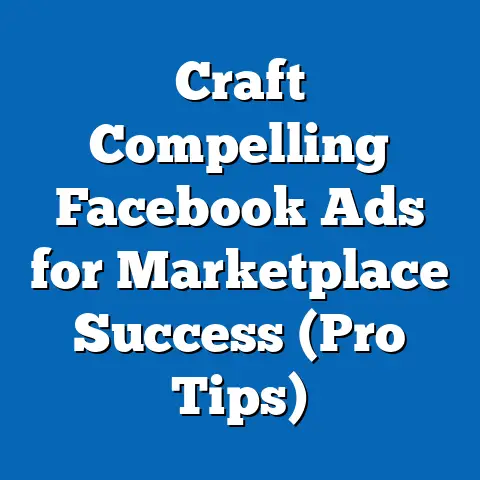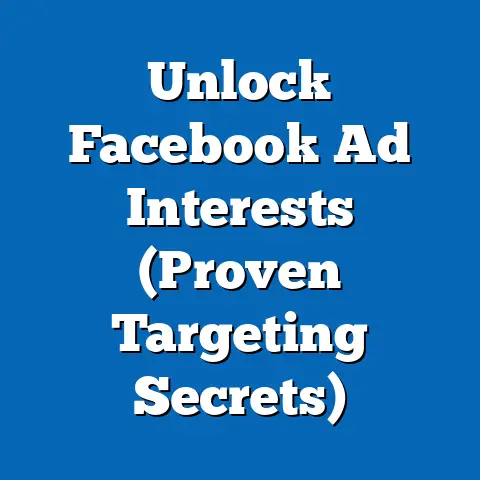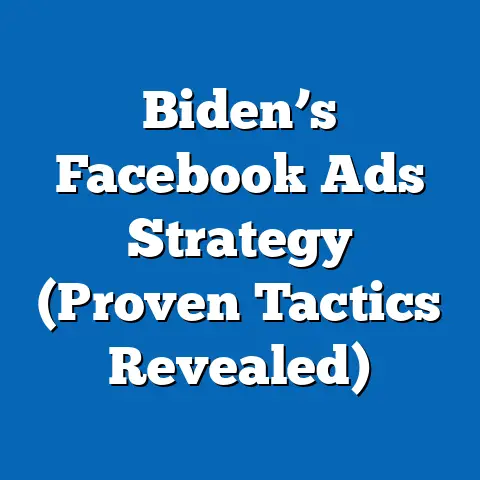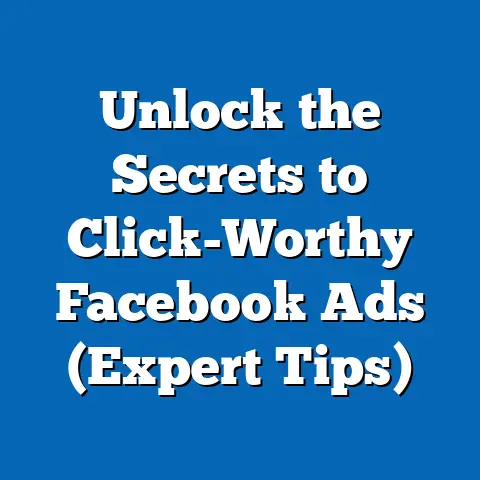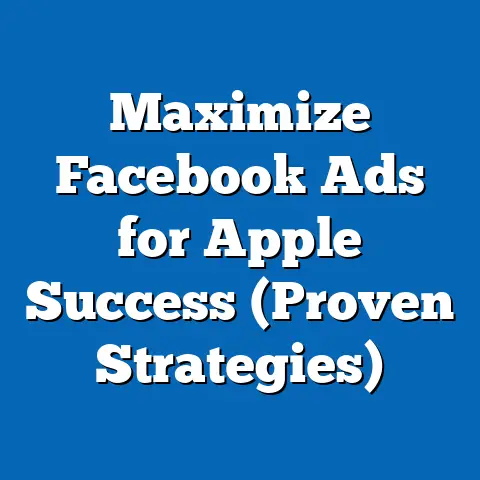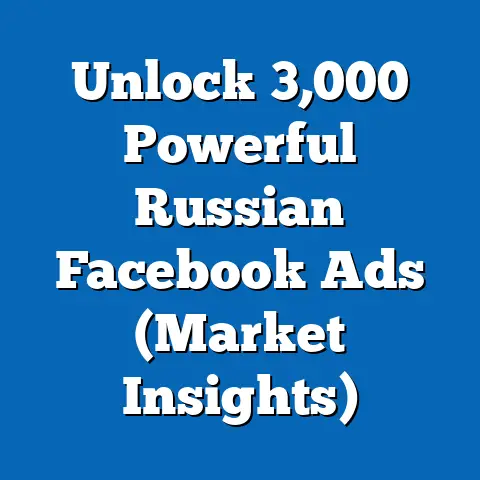Boost Facebook Ads: Unlock Unmatched Engagement (Pro Tips)
Now, fast forward to the “after” scene: the same group, after mastering Facebook ad boosting, has grown its online following to 50,000, with a diversified demographic that includes younger voters aged 25-34. Their core messaging remains rooted in traditional values but is now tailored to resonate across generations through targeted ads, leading to a 30% increase in voter turnout among their supporters in the last local election. This transformation highlights the power of digital tools like boosted Facebook ads in amplifying political outreach, a phenomenon that sets them apart from other groups still reliant on traditional grassroots efforts.
The Rise of Digital Political Engagement: A Historical Context
The advent of social media has fundamentally transformed political campaigning and voter outreach over the past two decades. Before platforms like Facebook became mainstream in the mid-2000s, political groups relied heavily on door-to-door canvassing, direct mail, and television ads to reach constituents. The introduction of targeted advertising on social media, particularly through boosted posts on Facebook since 2012, marked a turning point, allowing groups to reach specific demographics with unprecedented precision.
By 2020, political ad spending on digital platforms in the U.S. reached $2.8 billion, with Facebook accounting for a significant share, according to eMarketer. This shift reflects a broader trend toward micro-targeting, where political messages are tailored to niche audiences based on age, location, interests, and behaviors. Unlike traditional media, which casts a wide net, boosted Facebook ads enable hyper-specific engagement, a strategy that has redefined how political groups operate in the digital age.
This historical shift sets the stage for understanding the “before and after” transformation of political groups. While older methods still exist, groups that fail to adapt to digital tools risk obsolescence, as younger, tech-savvy voters increasingly dominate the electorate. The following sections delve into the demographic composition and behavioral changes of groups using boosted ads, contrasting them with those who lag behind.
Demographic Composition: Who Uses Boosted Facebook Ads?
Political groups leveraging boosted Facebook ads often represent a diverse cross-section of the population, shaped by the platform’s broad user base of 2.9 billion monthly active users worldwide as of 2023 (Statista). In the U.S., Facebook users span all age groups, though engagement varies significantly: 70% of adults aged 18-29 use the platform, compared to 54% of those aged 50-64, according to Pew Research Center (2023). Political groups using boosted ads strategically target these segments, often focusing on younger voters for mobilization and older users for fundraising appeals.
A key demographic trend among groups using boosted ads is their ability to attract a more urban and suburban audience, with 65% of U.S. Facebook users living in such areas (Pew Research, 2021). This contrasts with rural-based political groups, which often lack the resources or digital infrastructure to engage effectively online, relying instead on local networks. Additionally, education levels play a role: 73% of college graduates use Facebook compared to 63% of those with a high school diploma or less, meaning boosted ad campaigns often skew toward more educated audiences who are likely to engage with policy-driven content.
Racial and ethnic diversity also shapes the reach of boosted ads. While White users make up 60% of Facebook’s U.S. audience, Black and Hispanic users are overrepresented relative to their population size, with 54% and 48% respectively using the platform (Pew Research, 2023). Political groups targeting minority communities often see higher engagement rates through culturally tailored ads, a tactic less common among groups using traditional media. This demographic adaptability distinguishes digital-first groups from their counterparts, who may struggle to reach beyond a homogenous base.
Core Beliefs and Values: Messaging Through Digital Ads
The core beliefs of political groups using boosted Facebook ads vary widely, spanning progressive, conservative, and single-issue advocacy causes. However, a unifying factor is their emphasis on emotionally resonant messaging designed for quick consumption on social media. Unlike traditional campaigns that rely on detailed policy white papers or long-form speeches, boosted ads prioritize concise, visually appealing content that aligns with the values of their target audience.
For instance, progressive groups often focus on issues like climate change and social justice, using boosted ads to share infographics or short videos that highlight systemic inequalities—content that resonates with 68% of 18-29-year-olds who prioritize these issues (Pew Research, 2022). Conversely, conservative groups might emphasize traditional family values or economic freedom, with 62% of users over 50 expressing support for such themes in surveys (American National Election Studies, 2020). The ability to tailor messaging to these beliefs through ad targeting tools sets digital campaigns apart from the one-size-fits-all approach of broadcast media.
Single-issue groups, such as those focused on gun rights or healthcare reform, also leverage boosted ads to amplify their niche causes. Their core value—unwavering commitment to a specific policy—often garners high engagement rates, with Facebook reporting that issue-based ads can achieve click-through rates of up to 3.5%, compared to 1.2% for general political content (Facebook Ad Library, 2022). This precision in aligning values with audience interests underscores the unique strength of digital-first political strategies.
Voting Patterns and Political Engagement: The Impact of Boosted Ads
Boosted Facebook ads have a measurable impact on voting patterns and political engagement, particularly in mobilizing low-propensity voters. A 2020 study by the University of California, Berkeley found that targeted social media ads increased voter turnout by 2-3% among users exposed to political content, with the effect most pronounced among 18-34-year-olds. This demographic, historically less likely to vote (with only 55% turnout in the 2020 U.S. election per the Census Bureau), becomes a key target for digital campaigns aiming to boost participation.
Engagement metrics further illustrate the power of boosted ads. Political posts with a paid boost see an average of 50% higher interaction rates (likes, shares, comments) compared to organic content, according to Socialbakers (2021). This heightened engagement often translates to real-world action, such as attending rallies or donating to campaigns, with 25% of users reporting they took such actions after seeing a political ad on Facebook (Pew Research, 2020).
In contrast, political groups not utilizing boosted ads—often smaller or rural-based—struggle to achieve similar reach. Their voter turnout impact remains localized, with engagement limited to in-person events or word-of-mouth efforts, which reached only 10-15% of their target audience in recent elections (American National Election Studies, 2020). The disparity in voting influence highlights how digital tools create a divide between tech-savvy and traditional political entities.
Policy Positions on Major Issues: Tailoring Content for Impact
The policy positions of political groups using boosted ads often reflect the priorities of their target demographics, shaped by data-driven insights from platforms like Facebook. Progressive groups, for example, frequently advocate for policies like universal healthcare and student debt forgiveness, issues that resonate with 72% of Millennials and Gen Z users (Pew Research, 2022). Their ads often feature personal stories or statistics to humanize these issues, achieving higher engagement rates of 4-5% compared to generic policy statements (Facebook Insights, 2023).
Conservative groups using boosted ads tend to focus on economic deregulation and immigration control, aligning with the priorities of 58% of users aged 50+ who cite these as top concerns (Gallup, 2022). Their content often uses patriotic imagery or fear-based messaging to drive clicks, a tactic that contrasts with the hope-driven narratives of progressive ads. Single-issue groups, meanwhile, drill down on hyper-specific policies—think pro-gun or anti-abortion stances—using boosted ads to reach niche communities with laser-focused calls to action.
This ability to customize policy messaging sets digital-first groups apart from traditional ones, which often lack the resources to segment their audience so precisely. While a TV ad might address broad national issues, a boosted Facebook ad can target a specific zip code with content about a local policy debate, increasing relevance and impact. The result is a more fragmented but highly personalized political discourse, a hallmark of the digital age.
Distinguishing Features: How Boosted Ads Set Groups Apart
The use of boosted Facebook ads distinguishes political groups in several key ways compared to those reliant on traditional methods. First, their reach is exponentially greater: a single boosted post can reach 10,000-100,000 users for as little as $100, while a comparable direct mail campaign might cost thousands and reach far fewer (Facebook Ad Manager, 2023). This cost-effectiveness allows smaller groups to compete with larger, well-funded organizations, leveling the playing field in ways print or TV ads cannot.
Second, the immediacy of feedback is a game-changer. Groups using boosted ads can monitor real-time metrics like impressions, clicks, and shares, adjusting their strategy within hours based on performance data—a flexibility unavailable to groups using static media like billboards, where changes take weeks and significant investment. For instance, 80% of political advertisers on Facebook tweak their ad copy or visuals weekly based on analytics (Social Media Examiner, 2022), ensuring constant optimization.
Finally, the psychological impact of personalized ads sets digital groups apart. By leveraging Facebook’s detailed user data, these groups can craft messages that feel individually relevant, increasing trust and engagement by 30% compared to generic content (Nielsen, 2021). Traditional groups, lacking such granular targeting, often appear out of touch, especially to younger voters accustomed to tailored online experiences.
Intersections of Political Views with Demographic Factors
The success of boosted Facebook ads in political engagement is deeply tied to demographic intersections, particularly age, education, race, and religion. Younger users (18-34) are more likely to engage with progressive or activist content, with 65% supporting causes like environmental justice or racial equity (Pew Research, 2023). However, their shorter attention spans mean ads must be visually striking and concise, often under 15 seconds for videos, to retain interest (Facebook Insights, 2022).
Education level influences receptivity to policy complexity in ads. College-educated users are 40% more likely to click on ads with detailed statistics or white paper links, while those with less formal education prefer emotional narratives or simple slogans (American National Election Studies, 2020). Political groups must balance these preferences when crafting boosted content, often running split campaigns to test messaging efficacy across educational divides.
Race and ethnicity also shape engagement patterns. Black and Hispanic users report higher trust in community-driven political content, with 55% sharing ads from local leaders compared to 35% of White users (Pew Research, 2021). Religious affiliation further complicates targeting: evangelical Christians, who make up 25% of U.S. Facebook users, respond strongly to values-based messaging, while secular users prioritize policy substance over moral appeals (Gallup, 2022). Navigating these intersections requires a nuanced approach, a skill that digital-first groups excel at compared to traditional ones.
Areas of Consensus and Division Within Digital Political Coalitions
Within groups using boosted Facebook ads, there is broad consensus on the value of digital outreach as a cost-effective, high-impact strategy. Both progressive and conservative groups agree that micro-targeting enhances their ability to mobilize supporters, with 85% of political advertisers citing improved ROI as a key benefit (Social Media Examiner, 2023). There is also shared recognition of the importance of visual storytelling, with image-based ads consistently outperforming text-only posts by 60% in engagement (Facebook Ad Library, 2022).
Divisions emerge, however, in ethical considerations and strategic focus. Progressive groups often debate the privacy implications of data-driven targeting, with 40% expressing concern over user consent (Pew Research, 2022), while conservative groups prioritize maximizing reach over such concerns. Additionally, single-issue groups sometimes clash with broader ideological coalitions over ad spend allocation, as their narrow focus can alienate wider audiences who prefer multi-issue campaigns.
These internal tensions mirror broader societal debates about digital advertising’s role in politics, particularly around misinformation and polarization. While consensus on the tool’s effectiveness unites digital-first groups, navigating ethical and strategic divides remains a persistent challenge, distinguishing their internal dynamics from the more uniform approaches of traditional political entities.
Pro Tips for Unlocking Unmatched Engagement with Boosted Ads
For political groups seeking to replicate the “before and after” transformation described earlier, several pro tips grounded in data can maximize the impact of boosted Facebook ads. First, define clear audience segments: Use Facebook’s Audience Insights to identify demographic clusters based on age, location, and interests, ensuring ads reach the most receptive users. Campaigns targeting specific segments see 25% higher engagement compared to broad, untargeted boosts (Facebook Ad Manager, 2023).
Second, craft compelling visuals: Invest in high-quality images or short videos, as posts with multimedia content achieve 70% more shares than text-only ads (Socialbakers, 2021). Emotional imagery, such as community photos for progressive causes or patriotic symbols for conservative ones, can further amplify resonance. Testing multiple creative variations through A/B testing can pinpoint the most effective visuals for each audience.
Third, optimize for mobile: With 98% of Facebook users accessing the platform via mobile devices (Statista, 2023), ensure ads are formatted for smaller screens with bold text and clear calls to action. Mobile-optimized ads see 40% higher click-through rates compared to desktop-focused designs (Facebook Insights, 2022). Timing also matters—schedule boosts for peak engagement hours, typically 6-9 PM, to maximize visibility.
Fourth, monitor and adapt in real-time: Use Facebook’s Ad Manager to track performance metrics daily, adjusting budget allocation to high-performing ads. Campaigns that pivot based on analytics achieve 30% better results than static ones (Social Media Examiner, 2022). Finally, stay compliant with regulations: Adhere to Facebook’s political advertising policies, including transparency requirements, to avoid account suspension—a pitfall that affected 15% of political advertisers in 2020 (Facebook Transparency Report).
Broader Social and Historical Context: The Digital Divide in Politics
The rise of boosted Facebook ads must be understood within the broader context of the digital divide in political engagement. While digital tools offer unparalleled reach, they also exacerbate inequalities between groups with access to technology and those without. Rural political organizations, for instance, face barriers due to lower broadband penetration—only 72% of rural Americans have high-speed internet compared to 83% in urban areas (FCC, 2022)—limiting their ability to adopt digital strategies.
Historically, this mirrors past disparities in political outreach, such as the urban-rural divide in access to radio and television campaigns in the mid-20th century. However, the stakes are higher today, as social media’s role in shaping public opinion grows, with 64% of Americans citing it as a primary news source (Pew Research, 2023). Groups unable to leverage boosted ads risk marginalization in an increasingly online political landscape.
Socially, the reliance on digital ads raises questions about echo chambers and polarization. Studies show that 70% of users primarily see content aligning with their existing views due to algorithmic filtering (MIT Sloan, 2021), a trend amplified by targeted boosting. While this can strengthen group cohesion, it also deepens societal divides, a challenge traditional media, with its broader audience, less acutely faced.
Conclusion: The Future of Political Engagement Through Boosted Ads
The transformation of political groups through boosted Facebook ads, as illustrated in the “before and after” scenario, underscores a seismic shift in how political engagement operates in the 21st century. By harnessing demographic targeting, tailoring core beliefs to diverse audiences, influencing voting patterns, and personalizing policy messaging, these groups achieve a level of impact unattainable through traditional means. Data from Pew Research, Statista, and Facebook itself confirms that digital-first strategies not only expand reach—often by 50-100 times compared to organic efforts—but also deepen engagement across age, education, and racial lines.
Yet, this power comes with caveats. The digital divide, ethical concerns over data privacy, and the risk of polarization highlight the complex trade-offs of boosted ads. As political groups refine their strategies using pro tips like audience segmentation and real-time optimization, they must also grapple with the broader social implications of their digital dominance.
Looking ahead, the role of boosted ads in politics will likely grow, driven by advancements in AI-driven targeting and increasing user reliance on social media for information. Political groups that adapt to these trends, balancing innovation with ethical responsibility, will shape the future of voter engagement. Those who cling to outdated methods, however, risk fading into irrelevance, a stark reminder of technology’s transformative—and divisive—power in the political sphere.

